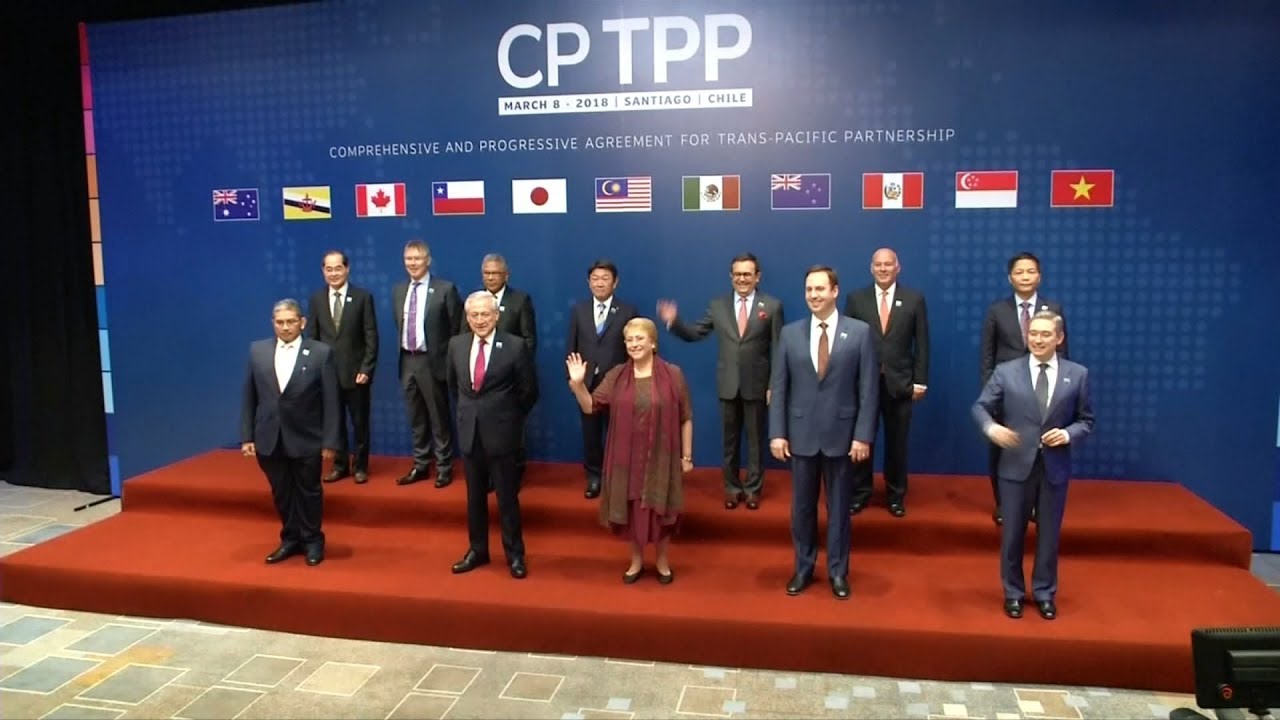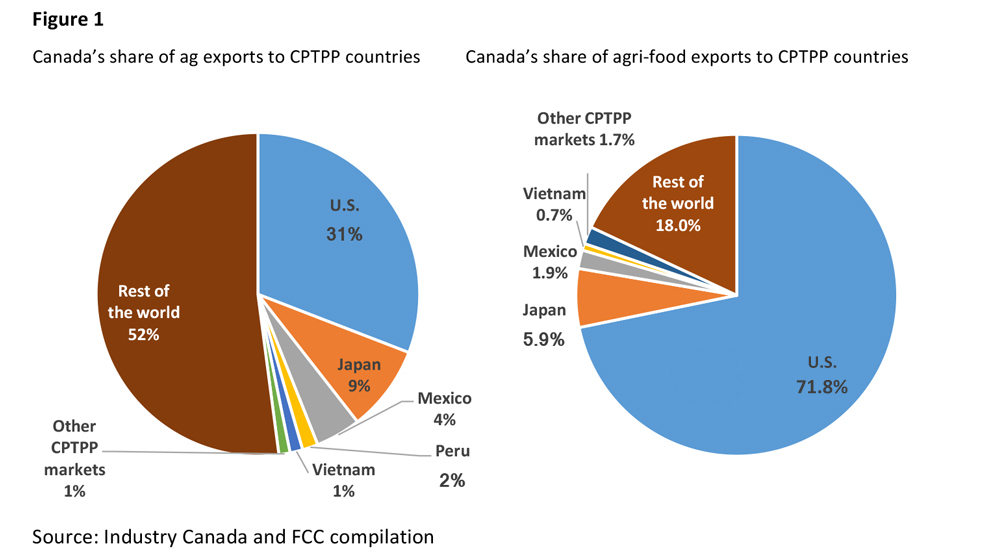CPTPP: A New Chapter for Canadian Agriculture and Food Exports

On March 8, 2018, some of the world’s largest food and agricultural traders signed a new trade deal, called the Comprehensive and Progressive Agreement for Trans-Pacific Partnership (CPTPP)
by J.P. Gervais – Farm Credit Canada (FCC)
What is the CPTPP?
Formerly the 12-country Trans-Pacific Partnership (TPP), the new deal now includes 11 trade partners (Australia, Brunei, Canada, Chile, Japan, Malaysia, Mexico, New Zealand, Peru, Singapore and Vietnam) representing 495 million people.
Canada still has to table the agreement, introduce implementation legislation to Parliament and obtain legal authority from the Governor-in-Council. Although there’s no timeline for the deal’s implementation, at least six of the signatories must notify they’ve completed the ratification process for it to become operational.
“Lowering trade and non-trade barriers in deals such as CPTPP go a long way to establish and maintain Canadian competitiveness”
Opportunities for Canadian food exports
As the world’s fifth largest agriculture exporter, and the 11th largest exporter of processed food in 2016 (based on most recent data), the CPTPP could help boost our raw commodity and agri-food exports to new and important markets. Here’s how:
The CPTPP removes barriers in high-potential Asian markets
CPTPP membership spans different developed and wealthy nations, fast-growing economies and efficient agricultural producers.
The International Monetary Fund (IMF) projects that Gross Domestic Product (GDP) in Vietnam and Malaysia will grow 6.2% and 4.8% in 2018, respectively. That pace of expansion, projected to last through 2023, will prompt growth in food demand.
Japan, a wealthy market, also shows potential. Japan’s per capita GDP growth is forecast to grow 3.9% in 2018, a growth rate higher than the U.S. and many European countries. This creates possibilities specifically for high-value exports.
The CPTPP will further diversify Canada’s export presence
With our agricultural and food production outpacing our domestic consumption, Canada must export most of it. For example: Canada produces over 30 million metric tonnes (Mt) of wheat annually. Throughout the 2017-18 marketing year, approximately 21.8 million Mt of wheat will be exported. Canada produced approximately 2.1 million Mt of pork in 2017 and exported 60% of that.
However, we still rely on exporting to the U.S., Canada’s largest single-country export market. In 2017, the U.S. market accounted for 31% of Canada’s total agriculture exports and 72% of agri-food exports.
Having close access to a huge market has helped to develop Canadian supply chains, but such focussed marketing poses a well-known risk. The CPTPP gives us the chance to diversify our exports beyond the U.S. and helps reduce risk.
In 2017, our CPTPP partners accounted for 17% of our ag exports (totalling CA$4.9B), and a little more than 10% of our exports of food products (totalling CA$3.6B). Of those partners, Japan accounted for the largest share of exports.
As part of the agreement, CPTPP countries will also gain access to the Canadian market. In 2017, they collectively exported to Canada agricultural commodities worth CA$2.7B (or 21% of total Canadian ag imports). They also accounted for CA$3B (or 10%) of total Canadian imports of food products in 2017.
The CPTPP includes provisions to deal with non-tariff barriers
The CPTPP’s success will be evaluated on factors well beyond the economic value of the tariff concessions and market access they provide. Its provisions on non-tariff barriers will be key.
How key? The agreement has four annexes and 30 chapters, only one of which deals directly with market access and tariffs. The remainder of the agreement spells out dispute settlement mechanisms and establishes rules to harmonize the regulations and standards that could affect Canadian business practices.
Those mechanisms and rules are foundational to the success of an agreement, because regulatory compliance in foreign markets and the inevitable disagreements that will arise, can be costly.
Canadian agriculture will benefit from open and transparent market access rules
World food demand is growing. Lowering trade and non-trade barriers in deals such as CPTPP go a long way to establish and maintain Canadian competitiveness in that exciting global market. But more needs to happen before the potential of the deal is realized.
Canadian businesses will also need to invest in developing excellent relationships with new buyers, and in the promotion of Canadian products to expand our presence in Asia. It could be the start of a whole new chapter for Canadian agri-food.
Check back next week, when we’ll dive into the CPTPP and the Canadian dairy sector.
J.P. Gervais is the Vice-President and Chief Agricultural Economist at Farm Credit Canada













